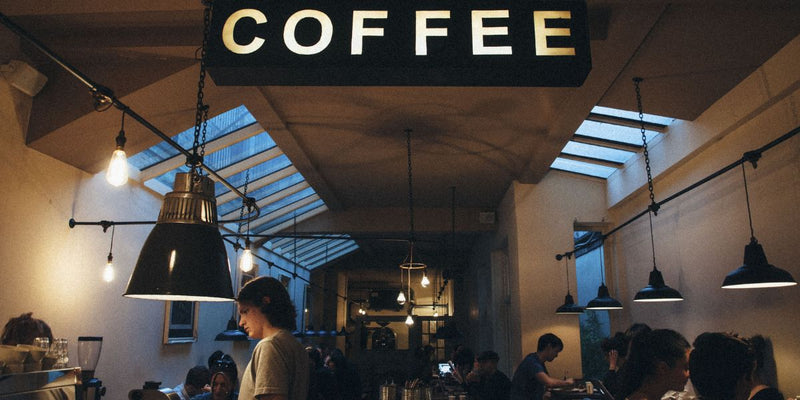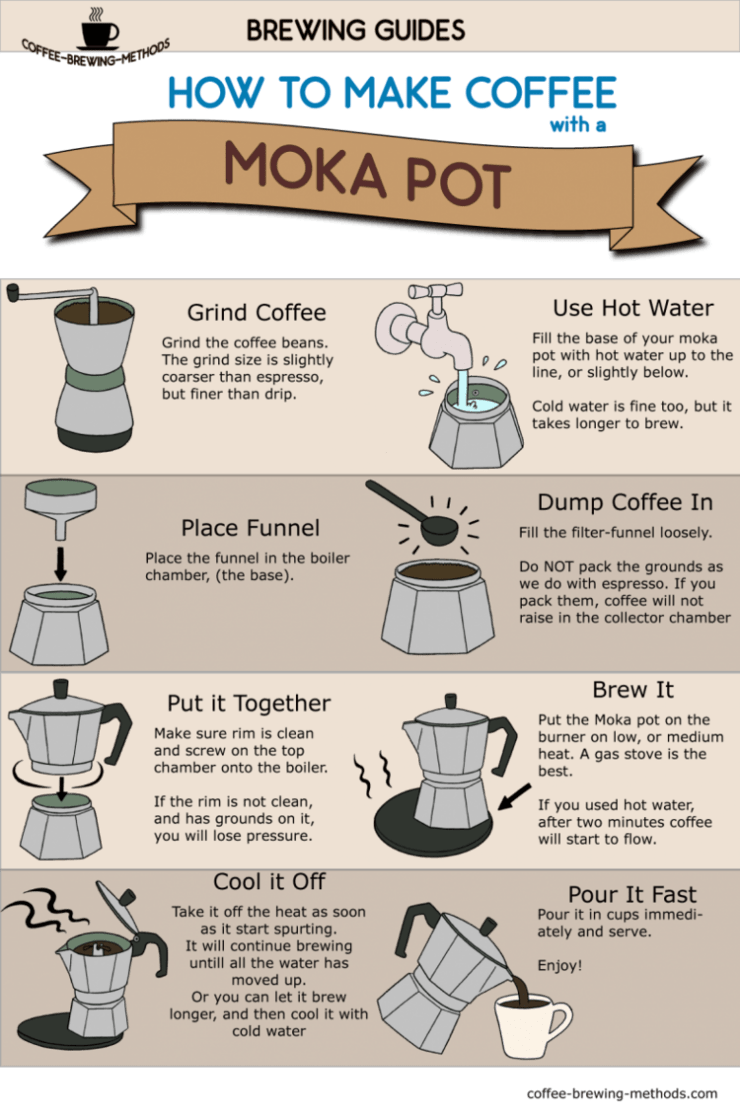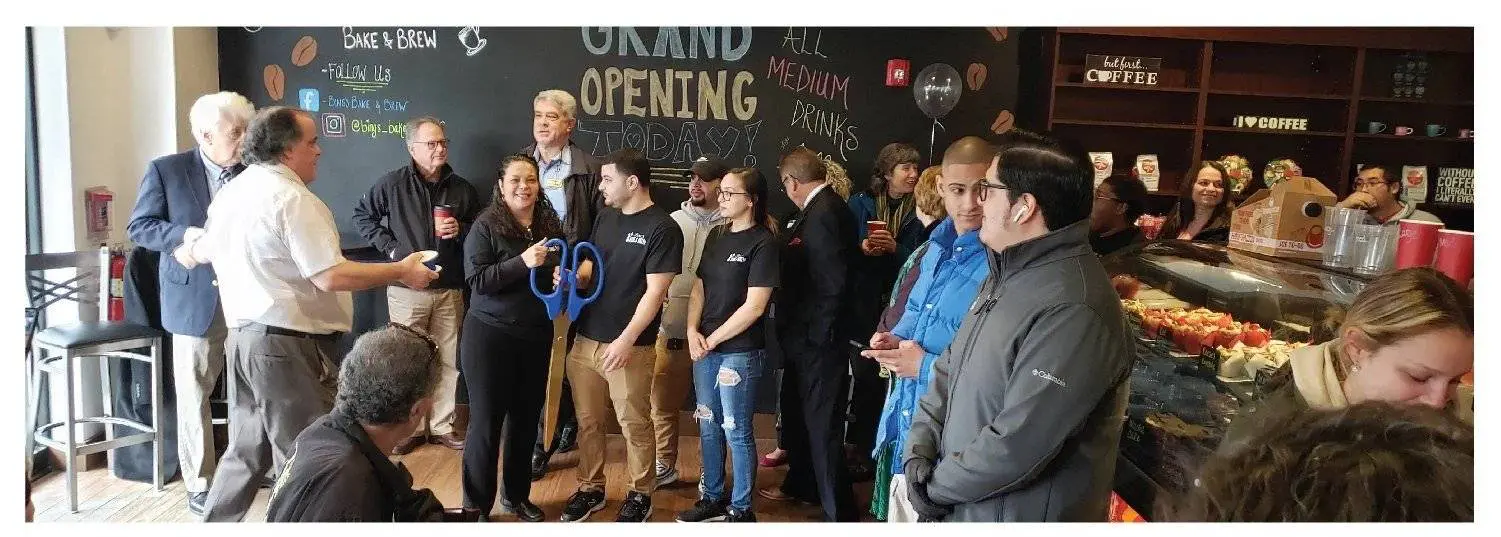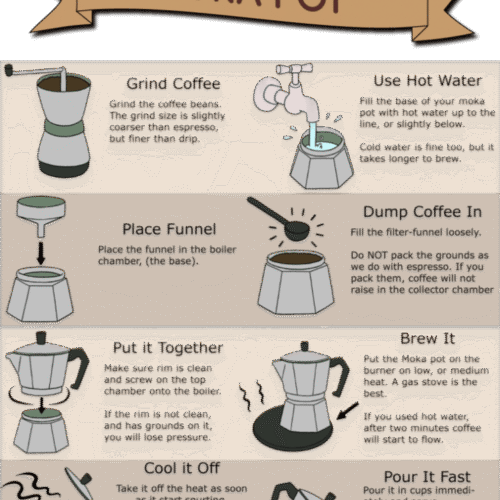Starting a coffee shop can cost anywhere from $80,000 to $300,000 for initial setup and equipment. The exact cost depends on several factors, such as location, size, and the quality of equipment and materials required.
Many variables such as rent, permits, renovation, and staffing also impact the overall investment. Additionally, recurring costs like inventory, utilities, and marketing should be considered for ongoing operations. Proper financial planning and market research are crucial for estimating the startup budget accurately and ensuring sustainability in the competitive coffee industry.
Understanding the initial costs involved is essential for anyone considering opening a coffee shop to make informed decisions and properly prepare for financial commitments.
Location Evaluation
Location evaluation plays a crucial role in the success of a coffee shop. The location of your coffee shop can significantly impact its performance and profitability. This section will explore the significance of the coffee shop location and how rental costs and location can impact your business.
Significance Of The Coffee Shop Location
Choosing the right location for your coffee shop is paramount to its success. The location determines the visibility, accessibility, and potential customer base for your business. A strategically located coffee shop can attract a steady flow of foot traffic, while a poorly located one might struggle to gain attention.
Factors such as proximity to offices, schools, or residential areas, as well as the presence of competing businesses, can all influence the suitability of a location for a coffee shop. Visibility, parking availability, and the overall ambiance of the neighborhood are also crucial considerations when evaluating a potential location for your coffee shop.
Rental Costs And Location Impact
The rental costs associated with different locations can vary significantly, impacting the overall financial feasibility of starting a coffee shop. Generally, prime locations in high-traffic areas come with higher rental costs, while less prominent locations may offer more affordable lease options.
It’s important to weigh the rental costs against the potential customer traffic and revenue generation. While a prime location might attract more customers, the higher rental expenses can cut into your profit margins. On the other hand, a less expensive location might have lower foot traffic, impacting the coffee shop’s visibility and customer base.
Legal And Licensing Costs
To start a coffee shop, legal and licensing costs vary depending on the location and regulations, but they typically include business registration, health permits, and food handling licenses. These costs can range from a few hundred to a couple thousand dollars, and it’s crucial to factor them into your budget planning.
Legal Requirements For Opening A Coffee Shop
Before opening a coffee shop, it is essential to understand the legal requirements governing this business. This includes obtaining the necessary permits and licenses, complying with health and safety regulations, and ensuring that the business operates within the law.
Cost Of Business Licenses And Permits
Obtaining business licenses and permits is a crucial step in starting a coffee shop. The costs associated with obtaining these legal documents can vary depending on the location and specific requirements set by local authorities. Typically, business licenses and permits may include health permits, food service permits, signage permits, and liquor licenses if the coffee shop plans to serve alcoholic beverages.
The table below provides an estimated cost breakdown for various permits and licenses:
| License or Permit Type | Estimated Cost |
|---|---|
| Health Permit | $100 – $500 |
| Food Service Permit | $200 – $1000 |
| Signage Permit | $50 – $300 |
| Liquor License | $500 – $5000 |
It’s important to note that these costs are just estimates and can vary based on the specific requirements of each locality. Consulting with local authorities or legal professionals can provide more accurate cost information for obtaining the necessary licenses and permits.
Equipment And Furnishings
When opening a coffee shop, one of the key aspects to consider is the cost associated with purchasing and setting up the necessary equipment and furnishings. These items are fundamental for the day-to-day functioning and ambiance of the coffee shop. Understanding the costs involved in acquiring essential equipment and furnishing the space is vital for budding coffee shop entrepreneurs. Let’s delve into the breakdown of equipment and furnishing expenses.
Essential Equipment And Their Costs
- Espresso machine
- Coffeemaker
- Coffee grinder
- Blender
- Icemaker
- Espresso machine: The cost of a high-quality espresso machine can range from $3,000 to $20,000.
- Coffeemaker: A commercial-grade coffeemaker can be purchased for approximately $500 to $1,500.
- Coffee grinder: Investing in a reliable coffee grinder can cost between $500 and $1,000.
- Blender: A professional-grade blender typically ranges from $200 to $600.
- Icemaker: Depending on the capacity, an icemaker can cost between $1,000 and $5,000.
Furniture And Interior Design Expenses
Creating an inviting and comfortable atmosphere within the coffee shop is crucial for attracting and retaining customers. The following are the key aspects of furniture and interior design that need investment:
Staffing
Effective staffing is crucial for the success of any coffee shop. The costs associated with staff should be carefully considered, including hiring, training, and ongoing employment expenses. Here are the key factors to take into account when evaluating the staffing costs for your coffee shop.
Consideration Of Labor Costs
Labor costs play a significant role in the budget. It’s essential to consider the legal requirements for minimum wages, benefits, and overtime pay. Understanding the local labor market and wage rates is important for creating a realistic staffing budget. Low labor turnover can also reduce the costs associated with recruitment and training.
Hiring And Training Expenditures
Hiring and training new employees can lead to substantial expenses. This includes advertising job openings, conducting interviews, background checks, and onboarding processes. Training expenditures encompass teaching staff about coffee preparation, customer service, and the operation of equipment. Investing in quality training can lead to improved service and customer satisfaction, enhancing the overall profitability of the coffee shop.
Coffee Beans And Supplies
Coffee beans and supplies are essential components for any successful coffee shop. Sourcing high-quality coffee beans and maintaining a well-managed supply chain are crucial factors that contribute to the overall cost of starting a coffee shop. In this section, we will delve into the associated costs and considerations when it comes to coffee beans and supplies.
Sourcing Coffee Beans And Costs
When sourcing coffee beans, it is imperative to prioritize quality to ensure a superior end product for your customers. The costs associated with sourcing coffee beans can vary based on factors such as the type of beans, sourcing methods, and suppliers. Here are some key considerations when assessing the costs:
- Direct trade or fair trade options may result in higher upfront costs but could offer better value and ethical sourcing.
- Exploring different coffee bean varieties and origins may impact the overall average cost per pound.
Supply Chain Management Costs
Managing the supply chain for coffee shop supplies involves various expenses beyond the coffee beans themselves. It encompasses a wide array of items such as syrups, milk, disposable cups, and cleaning supplies. When factoring these costs, it’s essential to consider:
- Transportation costs for acquiring supplies from various vendors or distributors.
- Storage and inventory management expenses, including shelving, refrigeration, and tracking software.
- Potential wastage and spoilage, which may necessitate buffer inventory to account for any losses.

Credit: majestycoffee.com
Marketing And Advertising
When starting a coffee shop, allocating a budget for marketing and advertising is crucial. Building brand awareness and attracting customers are essential for the success of any business, and the coffee shop industry is no exception. Recognizing the significance of marketing and advertising within your overall budget plan is vital for long-term growth and establishment of a loyal customer base.
Budgeting For Marketing And Advertising
Successful marketing and advertising campaigns are pivotal for attracting customers and spreading brand awareness. Allocating a specific portion of your overall budget to these activities is necessary for the sustainable growth of your coffee shop. When budgeting for marketing and advertising, consider various channels such as digital, traditional, and grassroots marketing to cover a diverse range of potential customers.
Digital Marketing And Social Media Promotion Costs
Investing in digital marketing and social media promotion is essential for reaching a larger audience in today’s digital age. Whether it’s setting up social media accounts, implementing email marketing, or running online advertisements, these activities ensure your coffee shop is visible and accessible to potential customers. Consider the costs associated with website development, social media management tools, and sponsored posts as part of your digital marketing and social media promotion budget.
Business Insurance
When launching a coffee shop, it’s vital to consider the various aspects of business insurance to protect your investment from potential risks. Insurance is a critical component that ensures financial security in the face of unforeseen circumstances. From general liability to equipment breakdown coverage, understanding the different types of insurance your coffee shop will need and evaluating insurance premiums are indispensable in safeguarding your business.
Types Of Insurance Needed
Several types of insurance are essential for a coffee shop to mitigate potential risks and liabilities. The following are key types of insurance to consider:
- General Liability Insurance: Protects the coffee shop from claims related to bodily injury, property damage, and advertising injury.
- Property Insurance: Covers physical assets, such as the building, equipment, and inventory, against damage or loss due to fire, theft, or other perils.
- Workers’ Compensation Insurance: Provides coverage for employee injuries and illnesses sustained during the course of employment.
- Business Interruption Insurance: Aids in covering the loss of income during periods of closure due to unforeseen events, such as natural disasters or equipment breakdowns.
Evaluating Insurance Premiums
Assessing insurance premiums is crucial to managing the cost of insurance for your coffee shop. Factors such as the location of the cafe, the size of the establishment, the value of the equipment, the number of employees, and the coverage limits will influence the premiums. It’s imperative to compare quotes from different insurance providers to find comprehensive coverage at competitive rates while meeting your specific business needs. Additionally, implementing risk management strategies and maintaining a safe working environment can help reduce insurance costs over time.
Utilities And Overhead Expenses
When considering the costs involved in starting a coffee shop, it’s essential to factor in utilities and overhead expenses. Understanding the various aspects of utilities and overhead costs is crucial for budgeting effectively and ensuring the smooth operation of the business.
Factoring Utilities Into The Budget
Utilities are a significant component of running a coffee shop and must be carefully considered in the budgeting process. These expenses typically include electricity, water, gas, and waste disposal. Identifying the average monthly costs for these utilities is vital for establishing a realistic financial plan.
Overhead Costs And Fixed Expenses
In addition to utilities, overhead costs encompass various fixed expenses that are essential for the daily operation of the coffee shop. These may include rent, insurance, property taxes, and equipment maintenance. Allocating funds for these fixed expenses is crucial for maintaining the stability of the business and avoiding financial pitfalls.
Renovation And Construction Costs
When starting a coffee shop, one of the significant expenses to consider is the renovation and construction costs. Setting up the physical space to meet health and safety regulations and create an attractive ambiance for customers is crucial to the success of the business. Below are some key aspects to consider in relation to renovation and construction costs:
Remodeling And Construction Expenses
Remodeling and construction expenses can vary significantly based on the condition of the chosen premises. When considering a location, entrepreneurs should evaluate the amount of work needed to transform the space into a functional and inviting coffee shop. For instance, a space that requires extensive structural renovations and upgrades to electrical and plumbing systems will entail higher costs compared to a space that only requires cosmetic updates.
Dealing With Unexpected Costs
During the renovation and construction phase, dealing with unexpected costs is an inevitable challenge. It is essential for coffee shop owners to allocate a contingency budget to account for unforeseen expenses that may arise during the renovation process. Factors such as discovering hidden structural issues or encountering compliance requirements not initially accounted for can lead to additional costs. Having a financial buffer can help mitigate the impact of unexpected expenses on the overall budget.
Initial Inventory
Starting a coffee shop requires meticulous planning, especially when it comes to the initial inventory. From coffee beans to cups and equipment, the cost of the initial inventory can significantly impact your budget. Understanding the specifics of what is needed and how to manage inventory costs is crucial to the success of your coffee shop venture.
Budgeting For Initial Inventory
Creating a budget for the initial inventory is a critical step in the setup of a coffee shop. It’s important to list down all the essential items required for the operation, such as coffee beans, syrups, dairy products, cups, lids, stirrers, and other necessary consumables. Having a detailed budget will help you to allocate funds efficiently and prevent overspending.
Inventory Management Costs
Once the initial inventory is procured, the ongoing management and replenishment costs need to be considered. Implementing an efficient inventory management system is essential to control expenses and minimize waste. This includes investing in software or systems to track stock levels, ordering and receiving processes, and storage. Careful monitoring and analysis of inventory turnover can also help in optimizing stock levels and reducing carrying costs.
Accounting And Software
When opening a coffee shop, accounting and software play a crucial role in managing finances and operations effectively. Understanding the costs associated with accounting software and technology infrastructure is essential for budgeting and planning. Let’s delve into the specifics of these costs.
Accounting Software Costs
Choosing the right accounting software is vital for maintaining accurate financial records. The costs of accounting software can vary based on the features and complexity of the system. Generally, accounting software costs can range from a few hundred to several thousand dollars. It’s important to consider the scalability and integration capabilities of the software with other business applications.
Technology And Pos System Fees
The technology and POS system fees encompass the expenses associated with point-of-sale systems, hardware, and software for transaction processing. These costs can vary based on the chosen vendor and the level of customization required for the coffee shop’s specific needs. Typically, the initial investment for technology and POS systems can range from $2,000 to $20,000, depending on the scale and complexity of the setup.
Menu Development
When starting a coffee shop, a crucial aspect is the menu development. The menu is the heart of a coffee shop, as it showcases the offerings and sets the tone for the customer experience. From coffee selections to pastries and sandwiches, the menu development process requires careful planning to create an enticing and profitable collection of items.
Cost Of Developing A Coffee Shop Menu
Developing a coffee shop menu involves diverse costs that should be taken into account. Factors such as ingredient quality, variety of offerings, and the target audience influence the overall expenses.
Food And Beverage Costing
Food and beverage costing is a crucial component of menu development. It involves determining the cost of ingredients, portion sizes, and pricing strategies to ensure profitability while remaining competitive in the market.
When calculating food and beverage costs, consider factors such as ingredient sourcing, menu diversification, and pricing analysis to strike a balance between maximizing profit margins and delivering value to customers.
Financial Planning And Contingency
Starting a coffee shop involves various costs, including rent, equipment, permits, and inventory. To ensure financial stability, it’s crucial to create a solid business plan that includes contingency funds for unexpected expenses. Financial planning plays a vital role in determining the overall cost and mitigating potential risks associated with starting a coffee shop.
Establishing A Financial Plan
Creating A Contingency Fund
Regulatory Compliance
Starting a coffee shop involves regulatory compliance, requiring various permits, licenses, and certifications. Costs vary depending on location and size, but typically include health permits, business licenses, and food handling certifications. Compliance with local health, safety, and labor regulations is vital for setting up and operating a successful coffee shop.
Adhering To Health And Safety Regulations
Before opening a coffee shop, entrepreneurs must ensure they comply with various health and safety regulations. Adhering to these standards is crucial to maintaining a safe and hygienic environment for both employees and customers. This can include requirements for food handling, storage, and preparation, as well as fire safety and emergency procedures.
Compliance Costs And Inspections
Setting up a coffee shop involves expenses associated with compliance to regulations. These may include obtaining permits and licenses, undergoing inspections, and implementing necessary safety measures. Compliance costs can vary based on the location and size of the coffee shop, as well as the specific regulations imposed by local authorities.
Competitive Analysis
Starting a coffee shop involves various expenses, including rent, furniture, equipment, licenses, and marketing. To understand the initial investment, conducting a competitive analysis on similar coffee shop setups in your area is crucial. By analyzing the market, you’ll gain insight into the cost of starting a coffee shop that aligns with your budget and business goals.
Analyzing The Competition
Before starting a coffee shop, it’s crucial to conduct a thorough competitive analysis. A competitive analysis involves evaluating the strengths and weaknesses of current and potential competitors in the market. This process provides valuable insights into the competitive landscape, allowing you to identify opportunities and threats, and ultimately make informed decisions about your coffee shop’s pricing and positioning.
Benchmarking Costs Against Competitors
When launching a coffee shop, benchmarking the costs against competitors is essential for ensuring that your business remains competitive in the market. By analyzing the pricing strategies, product offerings, and operational costs of existing coffee shops in your area, you can gain valuable insights into industry standards and determine the appropriate pricing structure for your own establishment. Benchmarking also helps in identifying areas where cost optimizations can be made, enabling you to offer competitive pricing while maintaining profitability.
Profitability Projections
Profitability Projections are crucial for determining the financial viability of starting a coffee shop. Understanding the potential revenue and expenses associated with a coffee shop business is essential for making informed decisions and creating a sustainable business plan.
Projected Revenue And Expenses
When evaluating the profitability of a coffee shop, projecting the revenue and expenses is a fundamental step. Predicting the potential income and costs helps in understanding the financial dynamics of the business. Here’s a breakdown of the projected revenue and expenses for a typical coffee shop:
Projected Revenue
- Income from coffee sales
- Sales of baked goods and snacks
- Revenue from specialty drinks and seasonal menu items
- Potential income from merchandise sales (mugs, shirts, etc.)
- Income from catering events, if applicable
Projected Expenses
- Cost of coffee beans and other ingredients
- Employee wages and benefits
- Rent or mortgage for the coffee shop space
- Utility bills and maintenance expenses
- Marketing and advertising costs
- Equipment purchases and maintenance
- Permits and insurance expenses
- Administrative and operational expenses
Financing Options
Frequently Asked Questions For How Much Does It Cost To Start A Coffee Shop
How Profitable Is A Coffee Shop?
A coffee shop can be profitable, with average annual profits ranging from $60,000 to $300,000.
What Is The Startup Cost For A Small Coffee Shop?
The startup cost for a small coffee shop varies, but it’s estimated at approximately $80,000 to $250,000.
How Much Money Should You Have To Open A Coffee Shop?
The cost to open a coffee shop varies, but you’ll typically need $80,000 to $300,000.
What Is The Average Investment For A Coffee Shop?
The average investment for a coffee shop varies, but it can range from $80,000 to $300,000.
Conclusion
Starting a coffee shop entails various costs, such as location, equipment, and fit-out expenses. Understanding the financial commitments involved is crucial for planning and budgeting. Factors like the type of business and your location will impact the overall expenses. Researching and consulting with industry professionals can help in making informed financial decisions.








